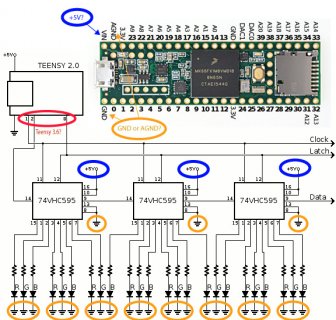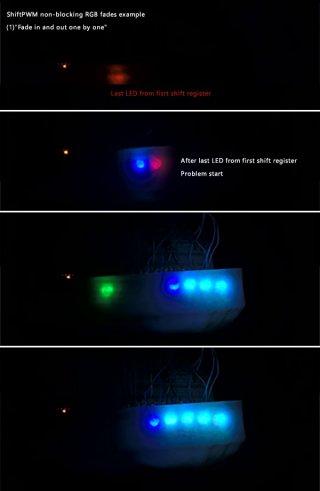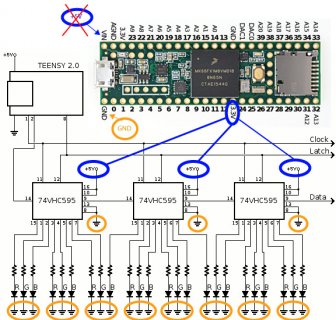Hi,
Sorry for my poor English.
I don't have much experience in electronics and I'm afraid of damaging the Teensy.
My project only receives power from the USB port.
I read a lot about the 74hc595 and the ShiftPWM Library, but I'm still in doubt where to connect on the Teensy 3.6.
I marked in the picture my doubts.

To start, I will do the tests only using 8 RGB LEDs, but in the final design, will be 9 RGB LEDs and 27 single color LEDs.
All ON most of the time.
Does the teensy 3.6 support this amount of consumption? Am I going to do any damage to the board?
Thanks
Sorry for my poor English.
I don't have much experience in electronics and I'm afraid of damaging the Teensy.
My project only receives power from the USB port.
I read a lot about the 74hc595 and the ShiftPWM Library, but I'm still in doubt where to connect on the Teensy 3.6.
I marked in the picture my doubts.

To start, I will do the tests only using 8 RGB LEDs, but in the final design, will be 9 RGB LEDs and 27 single color LEDs.
All ON most of the time.
Does the teensy 3.6 support this amount of consumption? Am I going to do any damage to the board?
Thanks



